Packaging and plastic products can take up to 1000 years to decompose. Meanwhile, that slow process is polluting the planet and poisoning our ecosystem. Some of the containers we daily use are the cause of this plastic sea, mostly the disposable ones. They are a major source of pollution, especially for the oceans. One way to avoid this damaging is to stop using them.
Apart from take away boxes, one of the elements that we most often use are plastic bags. Taking into account that the useful life of these bags are 15 minutes, it could mean two things: that it’s the average time it takes to get home and keep it in the “bag of bags”, or that in fifteen minutes we are able to throw this waste, without recycling it or reusing it.
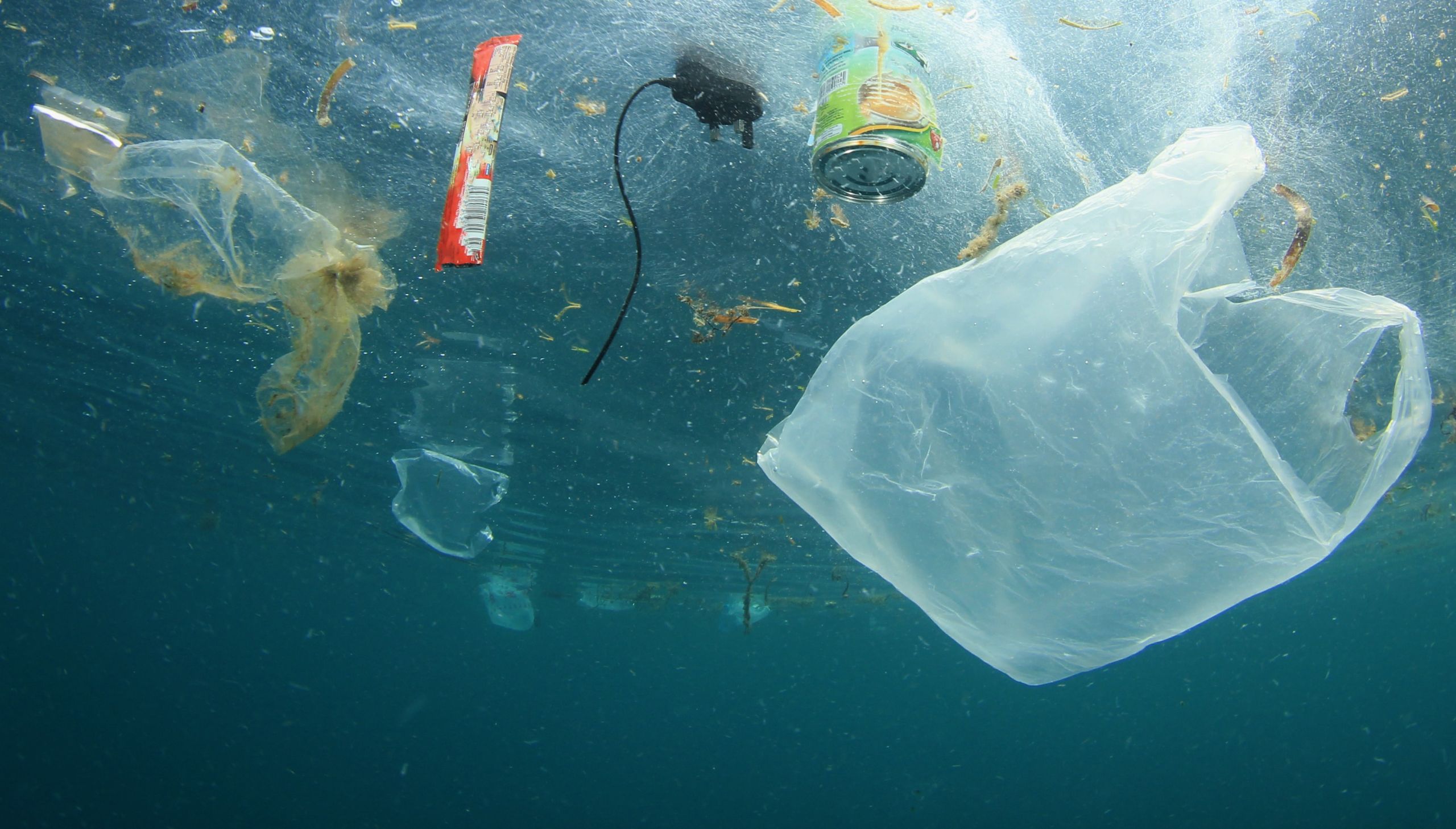
In an ideal world, all our waste could be recycled to avoid the accumulation of polluting materials. For now, as it is not possible at all, we will see three types of biodegradable materials that, at least, avoid the use and overcrowding of plastic.
1. CASSAVA
Cassava is a potato-like tuber very common in Africa, Asia and Latin America. This vegetable root has several health benefits, recommended for children and athletes.
But Indonesian company Avani Eco knew how to find one more use. The creator of Avani Eco, Kevin Kumala, was horrified when he discovered that almost all beaches of his island were full of garbage, so in 2014 he decided to create a brand of 100% biodegradable products. Currently, Indonesia is the second country (after China) that most pollutes its oceans, using them as landfills.
We highlight their bags, made with cassava starch. They look like plastic, although they are completely biodegradable. Also there’s a big difference: its decomposition. While a regular bag can take more than 400 years, this one dissolves in water in a maximum of 100 days. It is suitable for animal or human consumption. Therefore, it does not pollute or intoxicate.
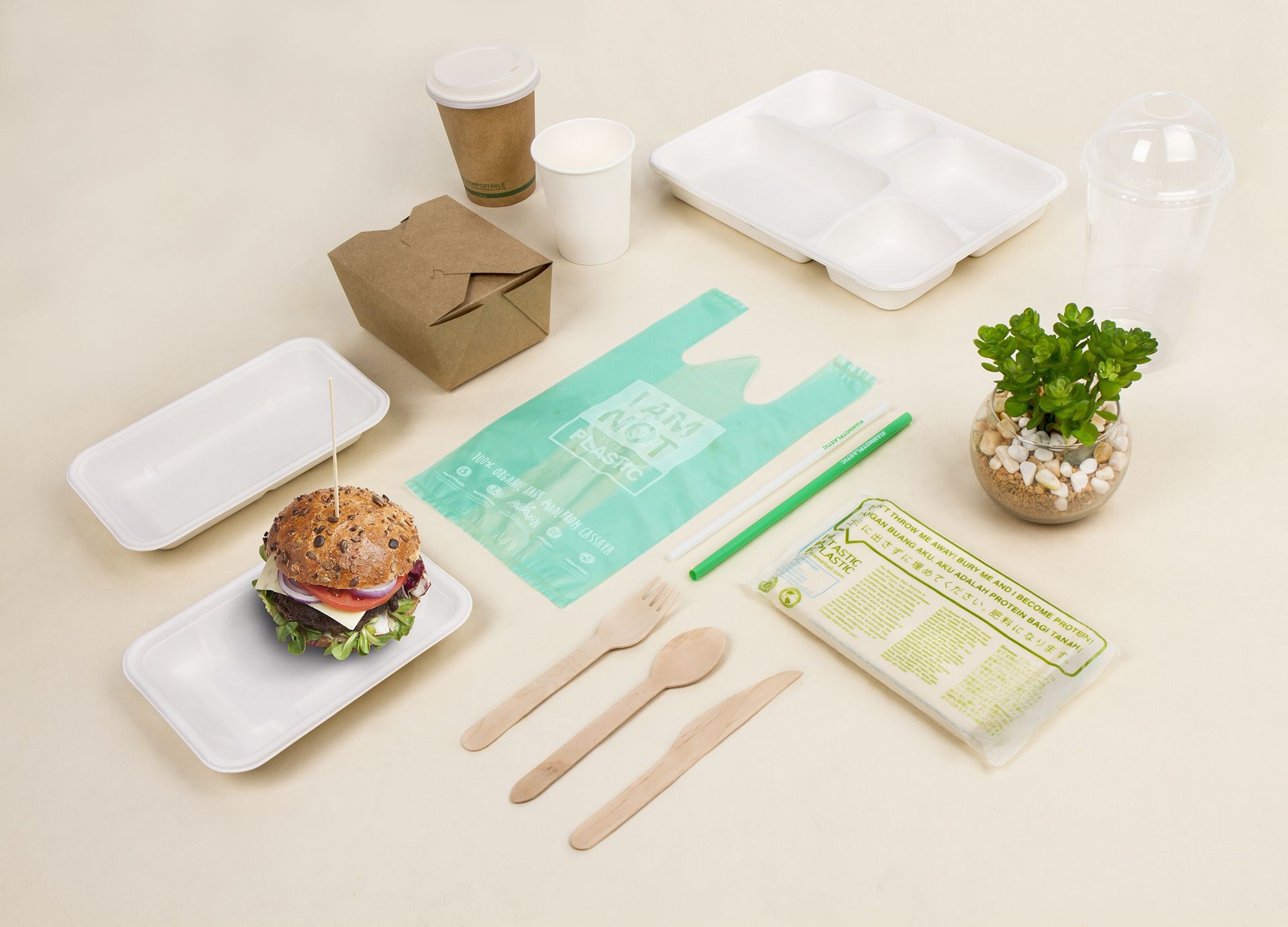
This company has been awarded by the “Most Valued Bussines Indonesia”, recognizing its effort for the most responsible initiative with the environment in that country. Still, the brand was viralized by their videos on social networks, where one of the creators is drinking the blue liquid that appeared after dissolving the bag in a glass of water.
2. ALGAE
Finding an ecological solution for plastic waste is a difficult task, but the Evoware company did a good job creating a series of algae-based packaging. This bioplastic material is edible, color and taste customizable and easily dissolved in water. Besides reducing a polluting impact, it helps with the economic development of seaweed growers in the area. Their values are based on innovation and collaboration.
Its first container was a glass made from seaweed and gelatin, edible after use. You could choose between various flavors, such as mint or tea, and it could contain from water to ice cream or small desserts.
Currently we can find different products, still basic although, but can be kept up to 2 years: bags for pads, mini bags for sauces and coffee, edible hamburger wrappers … These containers have no flavor, but they have an important nutritional value: minerals, vitamins and high fiber levels. In addition, they can be used as fertilizer for plants too. At the moment, they are working on a small scale, but they assure that their material could get to form large elements.
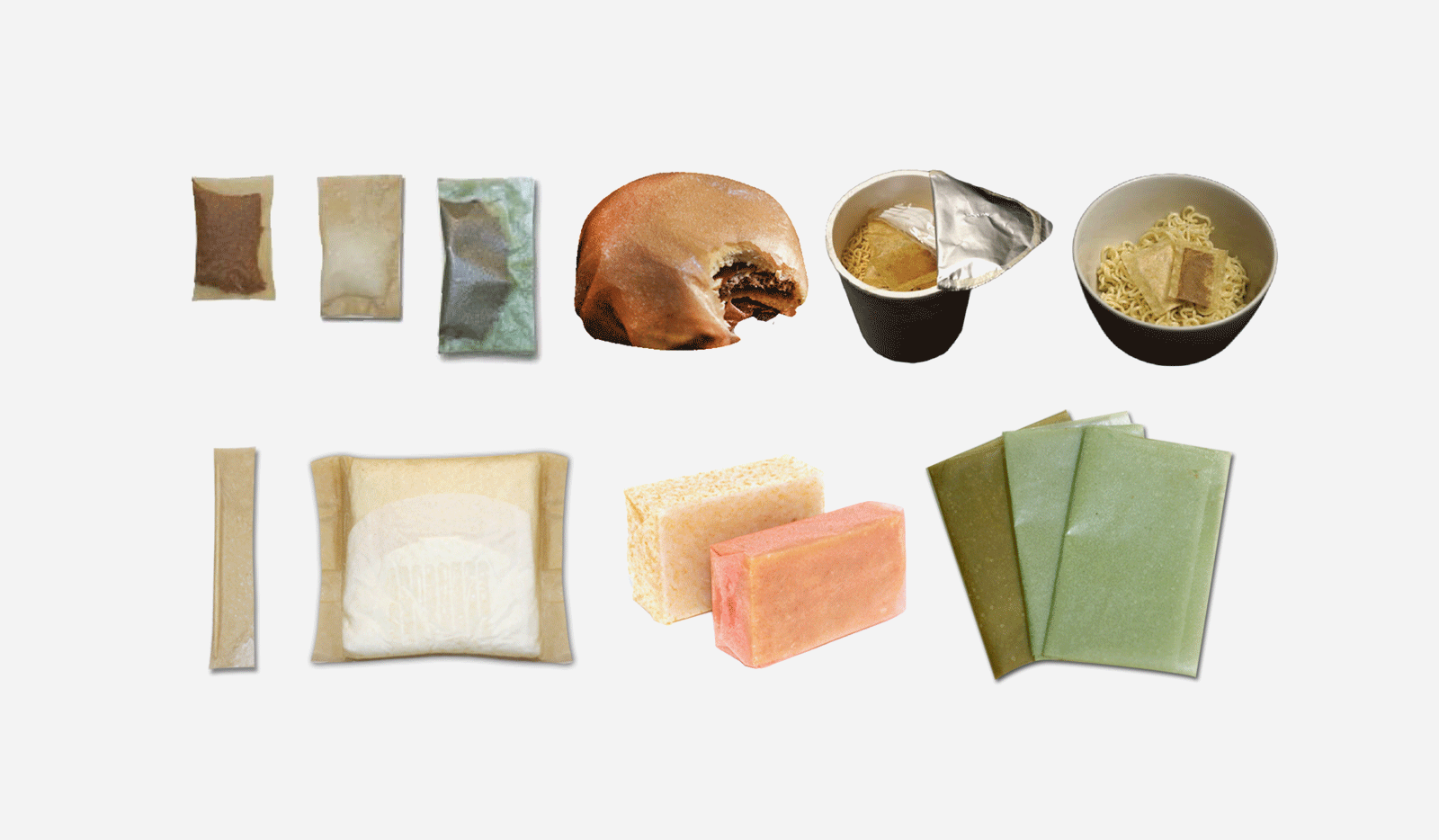
The disposable plastics, as we mentioned before, easily end up floating on beaches and oceans. With this solution from Evoware, you can use smaller containers that escape recycling and sneak into our marine life. This biological raw material, which has always gone unnoticed, it is now a tool with which we can reduce the environmental impact. In addition, algae are able to grow on almost all the coasts of the world, so international expansion can be an easy and fast process.
3. BEE WAX
Finally, an interesting Tomorrow Machine project, named “This too shall pass”. It presents a series of packaging made from natural materials, which highlights beeswax. It is not the first time that this Swedish studio surprises us with its creations, since a futuristic character predominates in all of them.
In this case, the company wanted to unite design and aesthetics with concern for the environment: besides being totally biodegradable, its packaging is minimalist, elegant and innovative.
First of all, they present a container for oily products, with a structure of caramelized sugar and wax. To open it, you simply have to crack it like an egg. As soon as the oil comes in contact with the sugar layer, it melts and drops the liquid inside. The wax layer allows us not to stain when grabbing this sphere of sugar, in addition to protecting the product to be consumed.
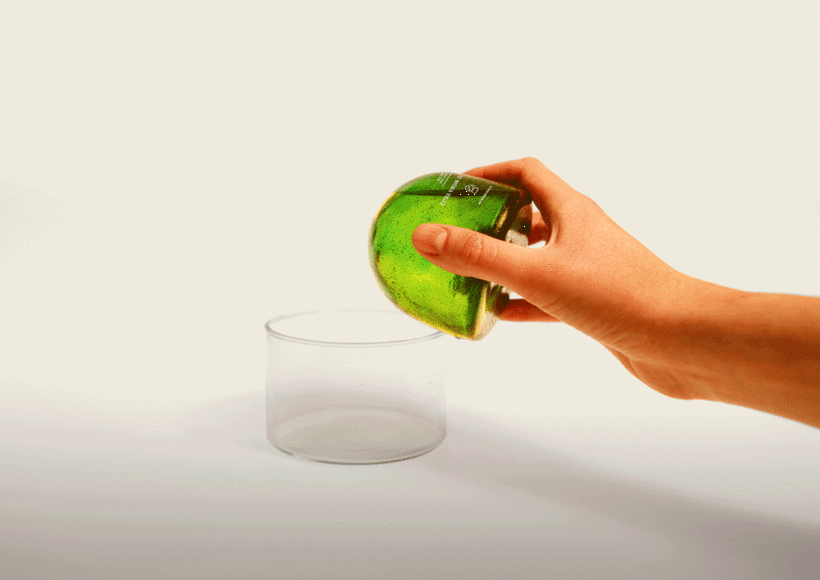
They also designed this 100% wax package with a conical shape. To open this container, you have to “peel” in the same way you would do it with a tangerine. It is ideal to contain dry foods such as rice, cereals, seeds or legumes. Apart from being perfect for skincare, beeswax has many other benefits. Some small businesses sell beeswax paper to use it as a natural wrapper for all kinds of food. It can be sealed with the heat of the hands and its duration can be extended up to 1 year. In addition, it is moldable and very versatile.
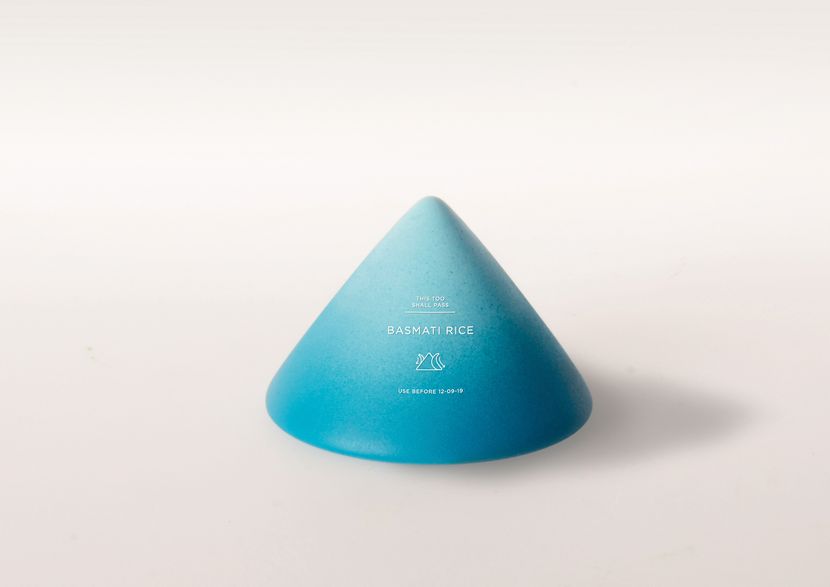
Adapting a respectful lifestyle that improves the environment is essential to avoid further ecological disasters. Thanks to technology, it is possible to achieve a more ecologically responsible future. This is because the use and study of materials made from plants or biodegradable materials is becoming more frequent.
Although it seems that getting these types of materials is expensive and almost impossible, there are other elements that do not pollute: cardboard, plant remains and even natural fabrics such as cotton or silk are perfect plastic substitutes. That means that instead of buying plastic bags in the supermarket, bring a cloth one from home. Or instead of wrapping a gift with plastic ties, use recycled paper with a straw bow.
As you can see, you can also do something about it. Are you prepared to reduce your environmental impact?

2 Responses to Biodegradable materials to achieve less residual packaging